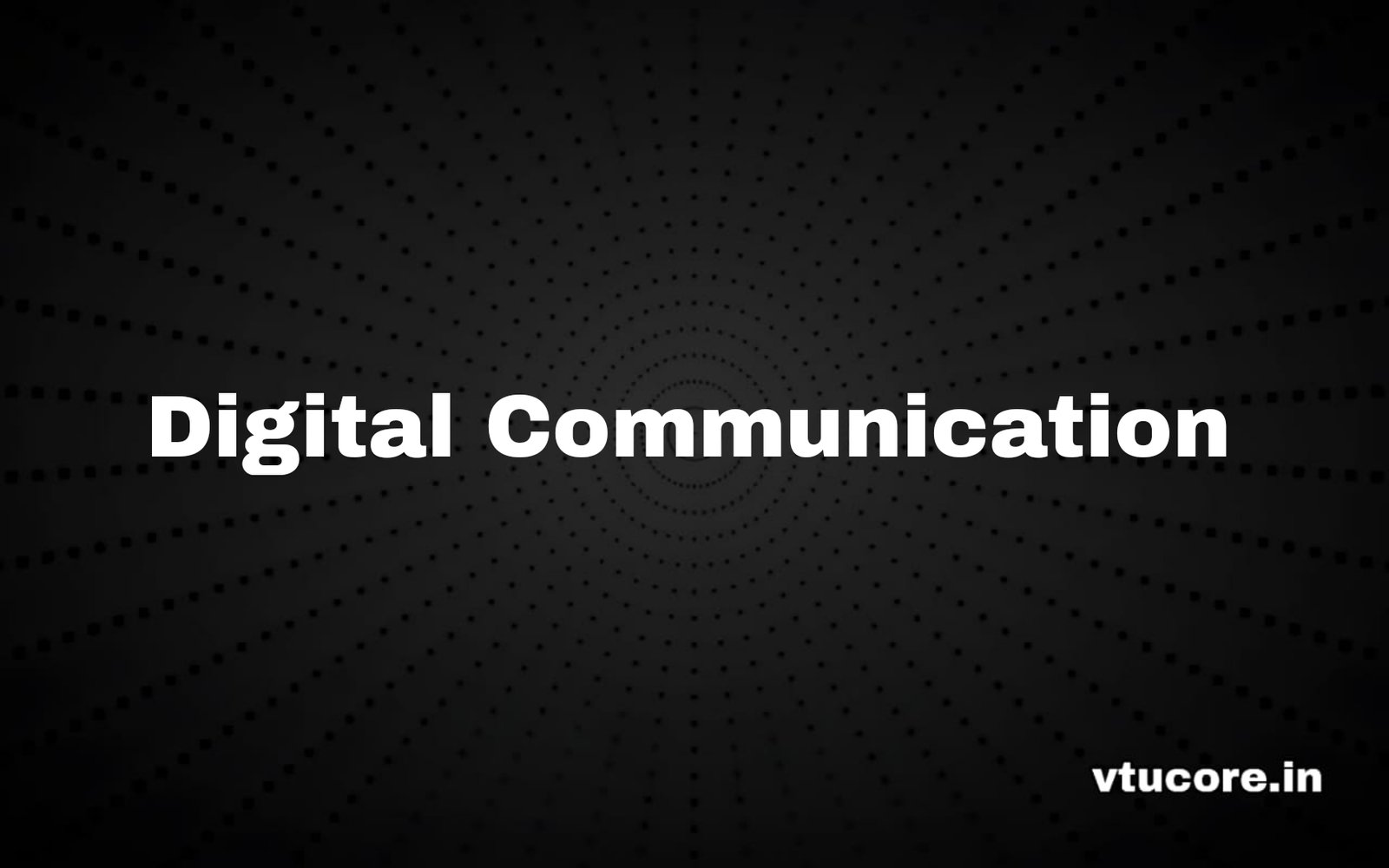DIGITAL COMMUNICATION BEC503
Course Code: BEC503
Credits: 04
CIE Marks: 50
SEE Marks: 50
Total Marks: 100
Exam Hours: 03
Total Hours of Pedagogy: 40H
Teaching Hours/Weeks: [L:T:P:S] 4:0:0:0
Bandpass Signals to Equivalent Lowpass: Hilbert Transform, Pre-envelopes, Complex envelopes of Band-pass
Signals, Canonical Representation of Bandpass signals.
Signalling over AWGN Channels– Introduction, Geometric representation of signals, Gram- Schmidt
Orthogonalization procedure, Conversion of the continuous AWGN channel into a vector channel , Optimum
receivers using coherent detection: ML Decoding, Correlation receiver, matched filter receiver.
Digital Modulation Techniques: Phase shift Keying techniques using coherent detection: generation, detection and error probabilities of BPSK and QPSK, M–ary PSK, M–ary QAM. Frequency shift keying techniques using Coherent detection: BFSK generation, detection and error probability. BFSK using Noncoherent Detection, Differential Phase Shift Keying.
Information theory: Introduction, Entropy, Source Coding Theorem, Lossless Data Compression Algorithms, Discrete Memoryless Channels, Mutual Information, Channel capacity, Channel Coding Theorem, Information Capacity Law (Statement).
Error Control Coding: Error Control Using Forward error Correction,
Linear Block Codes: Definitions, Matrix Descriptions, Syndrome and its properties, Minimum distance
Considerations, Syndrome Decoding, Hamming Codes.
Cyclic Codes: Properties, Generator and Parity Check Polynomial and matrices, Encoding, Syndrome
computation, Examples.
Convolutional Codes: Convolutional Encoder, Code tree, Trellis Graph and State graph, Recursive systematic Convolutional codes, Optimum decoding of Convolutional codes, Maximum Likelihood Decoding of Convolutional codes: The Viterbi Algorithm, Examples.


Good